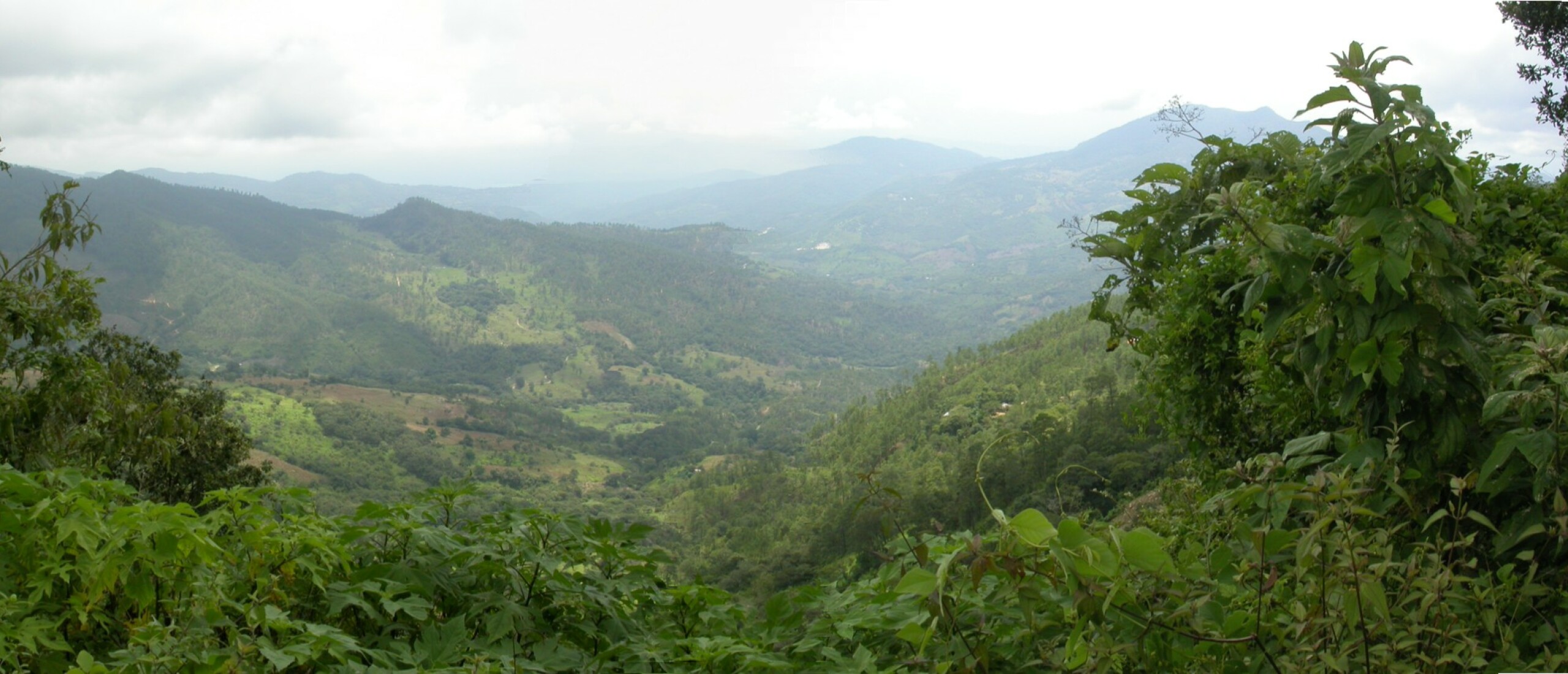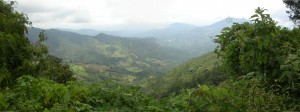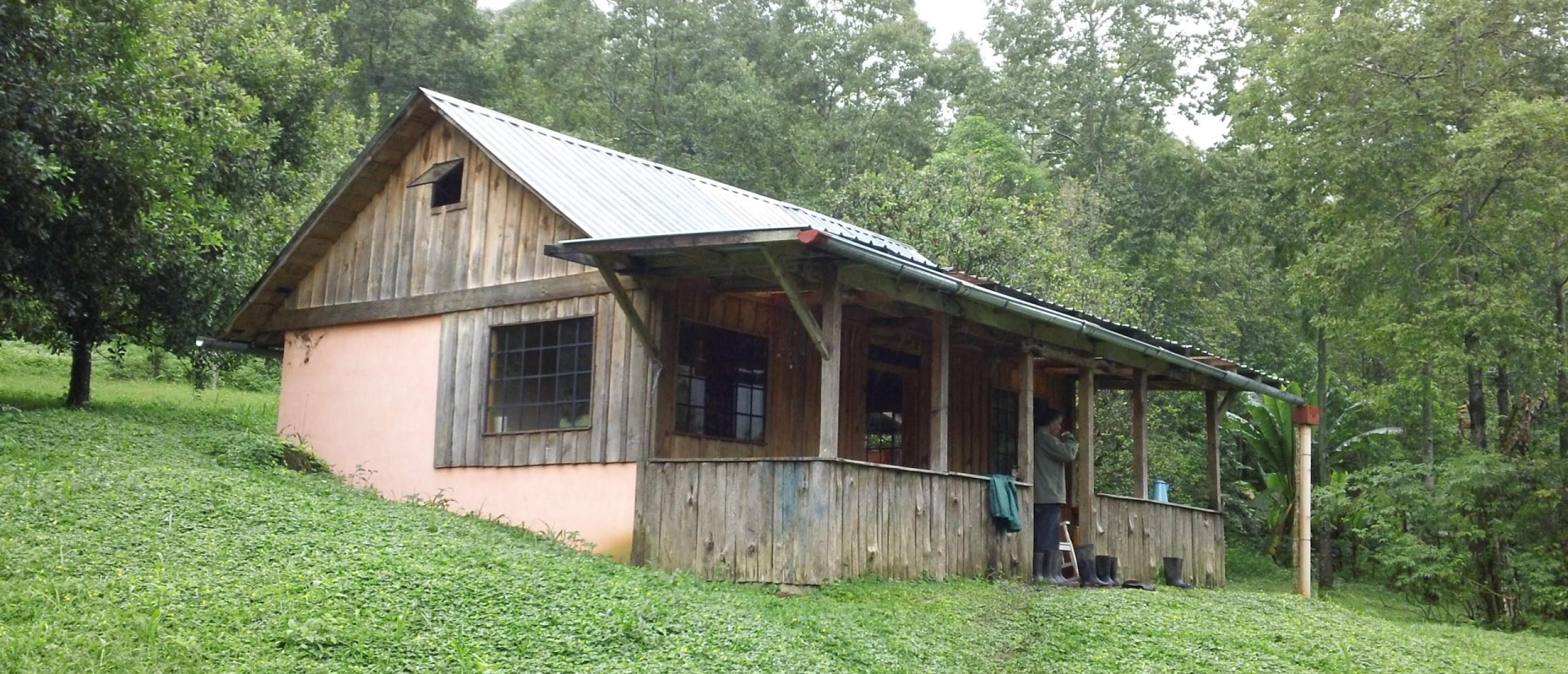
San Gerónimo We are now in a hotel near San Gerónimo (or San Jerónimo), one of my great grandfather’s favourite locations, and one in which he based himself for much of 1879 and the early part of 1880. Our journey started in Antigua, where we had planned to stay two nights, but when our friend Brenda told us that she would be driving from Guatemala City to Salamá THAT day, we thought it was too good a chance a miss, especially as she even offered to come to pick us up from Antigua as well – many thanks indeed to her. After leaving Antigua, we headed through the complex streets of Guatemala City, where there appeared to be no road signs at all, and were finally on the road heading north away from the city. The road, mostly of quite good standard and currently being upgraded by a joint Taiwan-Guatemala government funded project, led us through beautiful, mountainous country with splendid views across deep valleys, with the wild and almost untouched Sierra de las Minas in the distance. After about four hours, we finally came over the hill, and there below us was the village and agricultural valley of San Gerónimo, now containing many plastic-covered fields used for growing tomatoes and other crops. We soon checked into our hotel, and almost immediate set out again for the short drive to the restaurant where we were due to have dinner, where we met several of Brenda’s friends, including Eduar, who works as manager on an ostrich and other exotic livestock farm, Pablo, a colleague of Brenda’s working on crops with Monsanto, and, perhaps most surprisingly, Jiichiro, a Japanese entomologist working with an NGO protecting wild areas in the Verapaces provinces, with funding from the Japan International Cooperation Agency. He is working on BUTTERFLIES and BEETLES, conducting an inventory of species within one of these areas. If ever there was someone who is following up on GCC’s work here in Guatemala, it must surely be Jiichiro. The following day we were treated to a fascinating tour of some of the locations closely associated with GCC in the San Gerónimo area. We started off by driving through the town itself, which looked pleasant and peaceful….we entered the town through a triumphal arch with San Jerónimo written in gold letters across it; a large “George” had been graffitied across one of the columns. As the arch was built to commemorate the 2000 millennium, sadly we could not take it as evidence of George Champion’s presence! Our first stop was a beautiful hotel built in colonial style, close to the aqueduct that used to take water to the sugar mill of El Trapiche. Although this was not the actual home of GCC during his stay (both he and Osbert and Caroline Salvin stayed in the old convent next to the sugar mill; the convent has since disappeared), it was located close to some of the 124 arches of the aqueduct, on one of which could still just be made out the crest of the Dominican friars who founded San Gerónimo in the sixteenth century.
 Part of the old aqueduct of San Geronimo
Part of the old aqueduct of San Geronimo
From here, the intrepid Eduar took us up an EXTREMELY rough (in parts) track in his Toyota Hilux pick-up. I was reminded on several occasions of the BBC TV Top Gear team’s attempts to “kill” a Toyota Hilux, and how hard it was – this road would have been a good test, but of course this rugged vehicle passed with flying colours! The track wound up through pine and broad-leaved woodland, providing wonderful views back towards San Gerónimo below. We stopped to identify some of the numerous butterflies, as well as some orchids growing on the branches of some of the larger trees here – Eduar is a passionate orchid-watcher. The richness of the habitat here, coupled with the beautiful scenery and peaceful atmosphere, show why George had found this area such a wonderful base.
 Amazing spider by road to El Jicaro
Amazing spider by road to El Jicaro
After skidding around on slippery rocks, plunging through rock-filled stream beds and crashing through deep ruts, we finally came out on the main road at La Cumbre, where we stocked up on essential supplies (Fanta and Coke plus biscuits – George did not enjoy such luxuries in 1879!) before heading really off the beaten track, down a back road that GCC took on his mule. Even today this dirt track is little used, and it winds through the beautiful, still well forested mountains, before reaching the settlement of El Jicaro, which seems to consist purely of an elementary school serving a widely spread out community of farming families, all of whose children have to walk miles to receive their classes…which they do, all beautifully turned out in their neat school uniforms.
 Bordered Patch, Chlosyne lacinia
Bordered Patch, Chlosyne lacinia
From El Jicaro, our route took us back up to rejoin our original road at El Encuentro, from where we headed back on the main road to San Gerónimo. Here we attempted to enter the museum of the sugar mill and refinery of El Trapiche, next to which the Salvin’s and George most likely slept, but due to a payment dispute, the museum was closed. However, Eduar is not a man to give up easily, and he jumped over the barbed wire fence and disappeared to look for a guard to ask if we, as very special visitors, might be allowed to enter. Finally, he returned having found no guards, and we decided to brave it, and we too entered illicitly! The museum is quite fascinating, with much of the original equipment (made in Liverpool in 1845) still in working order, and Eduar, as a long-standing resident of San Gerónimo (his father was mayor for 28 years) was able to give us a full explanation of the workings of the sugar mill.
 Part of the old sugar works of El Trapiche, with equipment made in Liverpool in 1845
Part of the old sugar works of El Trapiche, with equipment made in Liverpool in 1845
In the evening we were invited to a dinner in another local historic finca, the Finca San Lorenzo (?), where we were fascinated to meet two gentlemen who come from long-standing coffee planter families, both of whom were able to give us much background information, and small world as it is (especially in Guatemala), one of them is the owner of the Finca Senahú, down the Polochic valley, WHERE GEORGE ALSO STAYED!! He kindly invited me to visit…this quest is becoming more and more interesting as it goes on!












